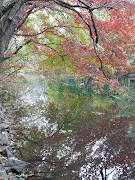Threats to use nuclear weapons are back in the news again, with
President Donald Trump trading increasing dire insults with North Korea's
provocative leader, Kim Jong-un.
Nuclear
weapons have been a threat to humanity since atomic bombs were exploded in 1945.
In the nuclear arms race with the Soviet Union, the US military in the 1950s trained
soldiers to fight on “atomic battlefields” in exercises that used real nuclear
explosions.
In
1962, shortly after I joined the Army, the Cuban Missile Crisis shook up people
around the world. To counter US nuclear
missiles that were aimed at Soviet cities, the Soviet military snuck nuclear
missiles into Cuba, 90 miles from Florida. President John F. Kennedy ordered a
Navy blockade of Soviet ships heading to Cuba and demanded that the Soviets
remove their missiles. The threat of nuclear war loomed in the news headlines.
And I realized as a soldier at Ft. Benning, Georgia that armies with rifles
couldn’t stop nuclear missiles.
Fortunately,
President Kennedy and Soviet leader Nikita Khrushchev negotiated a peaceful
resolution. The Soviets agreed to remove their missiles in exchange for the US promising
not to invade Cuba and to remove US nuclear missiles deployed in Turkey.
In
the 1980s another crisis arose when President Ronald Reagan took a belligerent
stand toward the Soviet Union, while the head of FEMA stated that Americans
could survive a nuclear war. Scientists launched a campaign to educate world
leaders and the public about the threat of “nuclear winter”—which could be
caused by multiple nuclear explosions creating massive fires and clouds of
smoke circling the Earth, blocking sunlight vital for growing food.
This
threat to life on Earth triggered a grassroots peace movement that held huge
protest marches, put the issue of negotiations for a nuclear “freeze” on the
ballot in cities and states across the country, and mounted “citizen diplomacy”
exchange visits of American and Soviet citizens. The size and international
scope of this civic movement convinced President Reagan to negotiate with
Soviet leader Mikhail Gorbachev, leading to significant reductions in nuclear
arsenals and an end to the Cold War.
Now
we have a new president threatening to use nuclear weapons in response to North
Korea developing nuclear weapons. Such a war could spread and involve other nuclear-armed
nations, which include China, Russia, India, Pakistan, Israel, France and the
British United Kingdom.
Even
a “small” nuclear war, such as between India and Pakistan, The New York Times reported last year, “with each [side] using 50
Hiroshima-size bombs (far less than 1 percent of the current arsenal), if
dropped on megacity targets in each country would produce climate change
unprecedented in recorded human history,” Dr. Alan Robock of Rutgers University
wrote in 2011 in the journal Nature.
Temperatures, he continued, “would be lower than during the ‘Little Ice Age’
(1400-1850), during which famine killed millions.”
Speaking
at a symposium on The Dynamics of Possible Nuclear Extinction at the New
York Academy of Medicine in 2015, Dr. Robock said the best solution to such a
threat is to greatly reduce the number of nuclear weapons, while working to
eliminate them altogether.








No comments:
Post a Comment